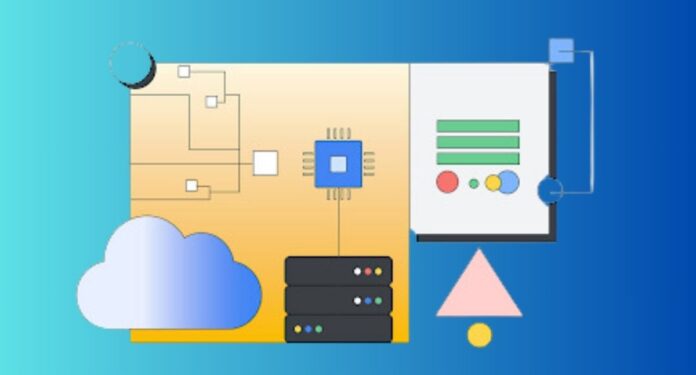Customers’ workloads are diverse, consisting of multiple services and components with distinct technical requirements. A uniform approach hinders their ability to scale while attempting to maintain cost and performance equilibrium.
In light of this, Google cloud introduced the C4 and N4 machine series, two new additions to their general-purpose virtual machine portfolio, at Google Cloud Next ’24 last month. The first machine series from a major cloud provider, the C4 and N4, are driven by Google’s Titanium, a system of specially designed micro controllers and tiered scale-out offloads, and make use of the newest 5th generation Intel Xeon processors (code-named Emerald Rapids).
C4 and N4 provide the best possible combination of cost-effectiveness and performance for a wide range of general-purpose workload requirements. While N4’s price-performance gains and flexible configurations, such as extended memory and custom shapes, let you choose different combinations of compute and memory to optimise costs and reduce resource waste for the rest of your workloads, C4 tackles demanding workloads with industry-leading performance.
C4 and N4 are built to satisfy all of your general-purpose computing needs, regardless of whether your workload demands constant performance for mission-critical operations or places a higher priority on adaptability and cost optimisation. The C4 machine series is currently available in preview for Compute Engine and Google Kubernetes Engine (GKE), while the N4 machine series is currently available broadly.
N4: Flexible forms and price-performance gains
The N4 machine series has an efficient architecture with streamlined features, forms, and next-generation Dynamic Resource Management, all designed from the bottom up for price-performance advantages and cost optimisation. With up to 18% better price-performance than N2 instances and up to 70% better price-performance than instances, N4 helps you reduce your total cost of ownership (TCO) for a variety of workloads as compared to prior generation N-Family instances. N4 offers up to 39% better price-performance for My SQL workloads and up to 75% better price-performance for Java applications as compared to N2 across key workloads.

Additionally, N4 offers you the most flexibility possible to accommodate changing workload requirements with bespoke shapes that provide you with fine-grained resource control. Custom shapes add a cost optimisation lever that is now exclusive to Google Cloud by letting you only pay for what you use, preventing you from overspending on memory or vCPU. Additionally, custom shapes provide seamless, reconfiguration-free migrations from on-premises to the cloud or from another cloud provider to Google, as well as optimisation for special workload patterns with unusual resource requirements.
In order to support a wider range of applications, N4 additionally offers 4x more preconfigured shapes at significantly bigger sizes up to 80 vCPUs and 640GB of DDR5 RAM as compared to similar offerings from other top cloud providers. Predefined forms for N4 are offered in three configurations: regular (4GB/vCPU), high-mem (8GB/vCPU), and high-cpu (2GB/vCPU).
In comparison to other cloud providers, N4 delivers up to 4 times the usual networking speed (50 Gbps standard) and up to 160K IOPS with Hyperdisk Balanced. Most general-purpose workloads, including medium-traffic web and application servers, dev/test environments, virtual desktops, micro services, business intelligence applications, batch processing, data analytics, storage and archiving, and CRM applications, are well-suited for N4. These workloads require a balance between performance and cost-efficiency.
Dynamic Resource Management
On N4 and Titanium, Google’s next-generation Dynamic Resource Management (DRM) improves upon current optimisation techniques to deliver a greater price-performance, reduce expenses, and support a wider range of applications.
Google cloud worldwide infrastructure is supported by a Google-only technology called dynamic resource management, which handles workloads for YouTube, Ads, and Search. The most recent iteration of dynamic resource management uses Titanium to precisely forecast and consistently deliver the necessary performance for your workloads. Dynamic resource management on N4 offers shown dependability, efficiency, and performance at scale.
C4: Cutting-edge features and performance in the industry
C4 is designed to handle your most demanding workloads. It comes with the newest generation of compute and memory, Titanium network and storage offloads, and enhanced performance and maintenance capabilities. When compared to similar services from other top cloud providers, C4 offers up to 20% better price-performance; when compared to the previous generation C3 VM, C4 offers up to 25% better price-performance across important workloads.

In addition, C4’s Titanium technology provides up to 80% greater CPU responsiveness than prior generations for real-time applications like gaming and high-frequency trading, which leads to quicker trades and a more fluid gaming experience. Demanding databases and caches, network appliances, high-traffic web and application servers, online gaming, analytics, media streaming, and real-time CPU-based inference with Intel AMX are all excellent fits for the high performance of C4.
Additionally, C4 transfers processing for virtual storage to the Titanium adapter, which enhances infrastructure stability, security, performance, and lifecycle management. Titanium enables C4 to provide scalable, high-performance I/O with up to 500k IOPS, 10 GB/s throughput on Hyperdisk, and networking bandwidth of up to 200 Gbps13.
Better maintenance controls are another feature that C4 provides, allowing for less frequent and disruptive planned maintenance with increased predictability and control. C4 instances can support up to 1.5TB of DDR5 RAM and 192 vCPUs. Standard, high-memory, and high-processor variants are offered. Customers of Compute Engine and Google Kubernetes Engine (GKE) can now access C4 in Preview.
N4 and C4 work well together
They are aware that choosing the ideal virtual machine is critical to your success. You can reduce your overall operating costs without sacrificing performance or workload-specific needs when you use C4 and N4 to handle all of your general-purpose tasks.
Utilise virtual machines (VMs) that expand with your company. Combining C4 and N4 offers you flexible options to mix and combine machine instances according to your various workloads, along with affordable solutions that put performance and reliability first.
Availability
Us-east1 (South Carolina), Us-east4 (Virginia), Us-central1 (Iowa), Europe-west1 (Belgium), Europe-west4 (Netherlands), and Asia-southeast1 (Singapore) currently have widespread access to N4. Customers of Google Kubernetes Engine (GKE) and Compute Engine can now access C4 in Preview.


